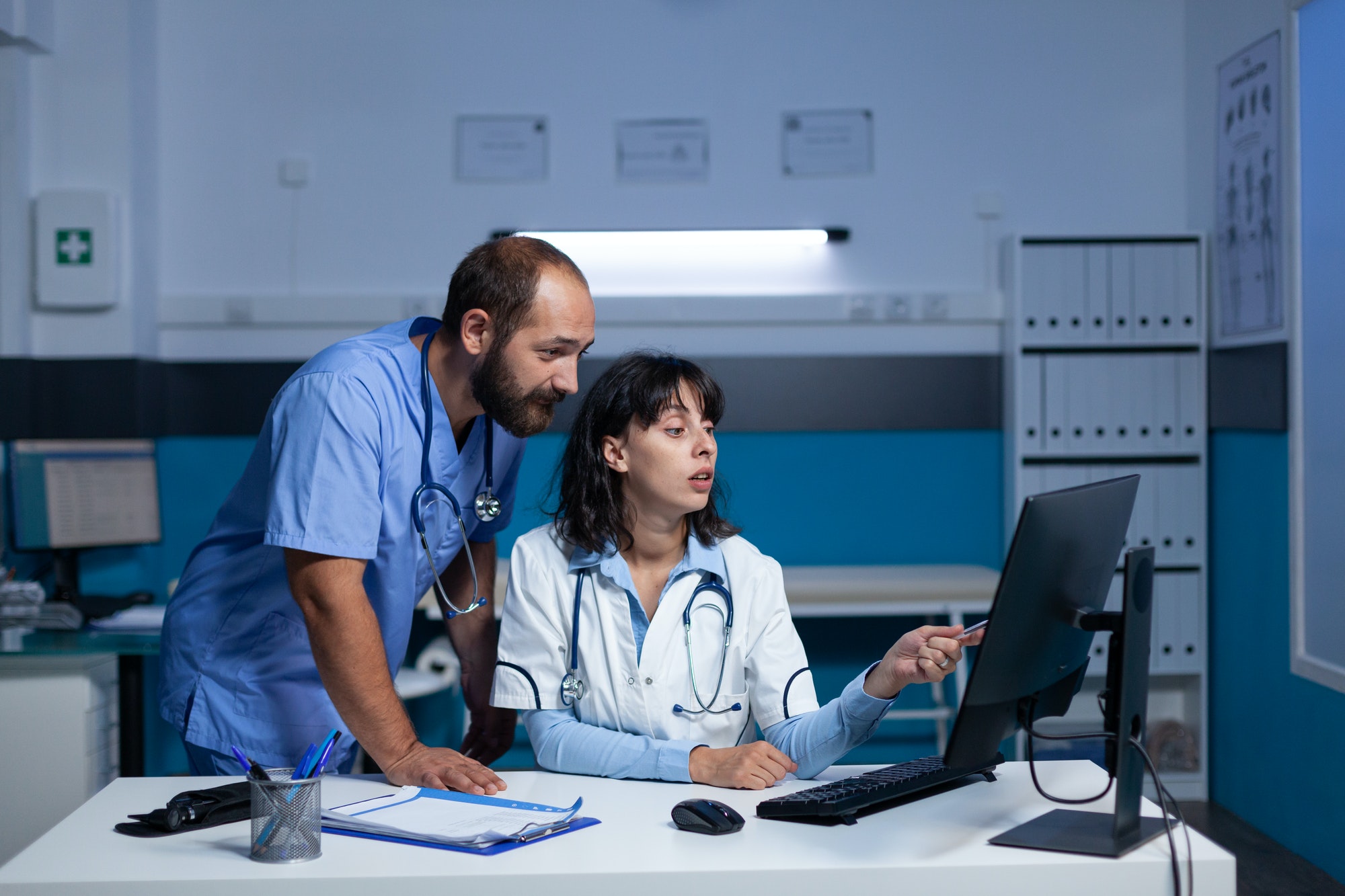DISCLAIMER: The below blog entry was written by an outside, unrelated party and does not necessarily express the opinions or views of or associated with the RemoteICU brand or the individuals associated with the RemoteICU brand. The blog is not necessarily endorsed or supported by RemoteICU nor was the entry reviewed and accepted by individuals associated with RemoteICU. The blog entry is provided simply to address and create interest in topics of import related to telemedicine. Your own independent research and decision-making and seeking of expert / professional opinions are required before you make any decisions whatsoever or form any opinions with respect to any topics addressed therein. By reading the blog entry, you consent to accepting the terms and conditions in this disclaimer.
As is true of many industries, ICUs have entered the digital era. One health-related technology that has been in use for some time is the EHR. Now, more than ever, researchers are pointing out the potential value of incorporating EHR technology into eICU (electronic intensive care unit) systems as the industry evolves.
What is an EHR?
An Electronic Health Record (EHR) or Electronic Medical Record (EMR) is a digitalized version of a patient’s medical chart, which in the past had been paper-based. Patient charts contain crucial information which practitioners use to make precise diagnoses and to create treatment plans thereby leading to better outcomes. The EHR contains medications, family history, lifestyle, demographics, and more.
The first EHRs emerged during the 1960s, with Mayo Clinic in Rochester, MN becoming the first vast system to adopt an EHR project. Fast forward to 2004, President George Bush doubled the national budget for healthcare IT projects and created the National Coordinator of Health Information Technology Office.
Modern EHRs
Today, EHRs are real-time, patient-focused records that provide official users with secure and instant information. Although the EHR contains patients’ medical and treatment histories, the system goes beyond this standard clinical information collected and can present a broader view of patient care. The essential roles filled by EHRs in medical health include:
- Containing priority patient medical history, medications, allergies, diagnoses, immunization dates, radiology images, test and laboratory results, and treatment plans.
- Enabling the digital creation, management, and sharing of health details with all those involved in a patient’s care, such as specialists, emergency facilities, laboratories, medical imaging facilities, pharmacies, workplace clinics, and even school. As such, EHRs contain all involved clinicians’ information.
- Giving providers access to evidence-based tools to make superior patient care decisions.
- Streamlining and automating health providers’ workflows.
eICU and EHR Technology
eICU (sometimes hyphenated as “e-ICU”) provides technology-based intensive care treatment and care provided from a remote command center. In its simplest form, eICU specialists (who are board certified critical care (ICU) physicians specifically trained on eICU) provide two-way, on-demand communication with ICUs via mobile platforms and audio-visual (AV) equipment. However, the infrastructure is usually a far more intricate and layered system comprised of secured AV exchange, access to imaging systems, EMRs, and telemetry for documentation, data retrieval, risk classification and critical time-sensitive decision-making support.
Straightforward and immediate access to patient data for eICU physicians is crucial to achieving the best possible patient outcomes. Since both e-ICU and EHR systems are technology-based, integration can enable sustainable workflow and optimal eICU functionality. In addition, the systems complement each other in many other ways.
eICU and EHR integration benefits
The following section provides a breakdown of eICU and EHR synchronization benefits:
- Automated data entry: Efficiency eliminates the need for duplicate data entry by the hospital and remote providers and reduces mistakes when updating the EHR system. Furthermore, changes to the electronic intensive care unit system should automatically update patient health records and vice versa, making the latest information always available to providers virtually consulting with patients.
- Enabling a simple and familiar patient/provider experience: eICU physicians require patient health records to provide the same information and robustness as in-person encounters. Using an integrated system with which providers are familiar, facilitates and simplifies the process. The use of AV consultations together with current EHR systems, faithfully simulates in-person patient/provider interactions.
- Overall, comprehensive patient information from EHRs ensures better-informed, faster, and coordinated eICU decision-making for improved patient outcomes and reduced safety risks.










































